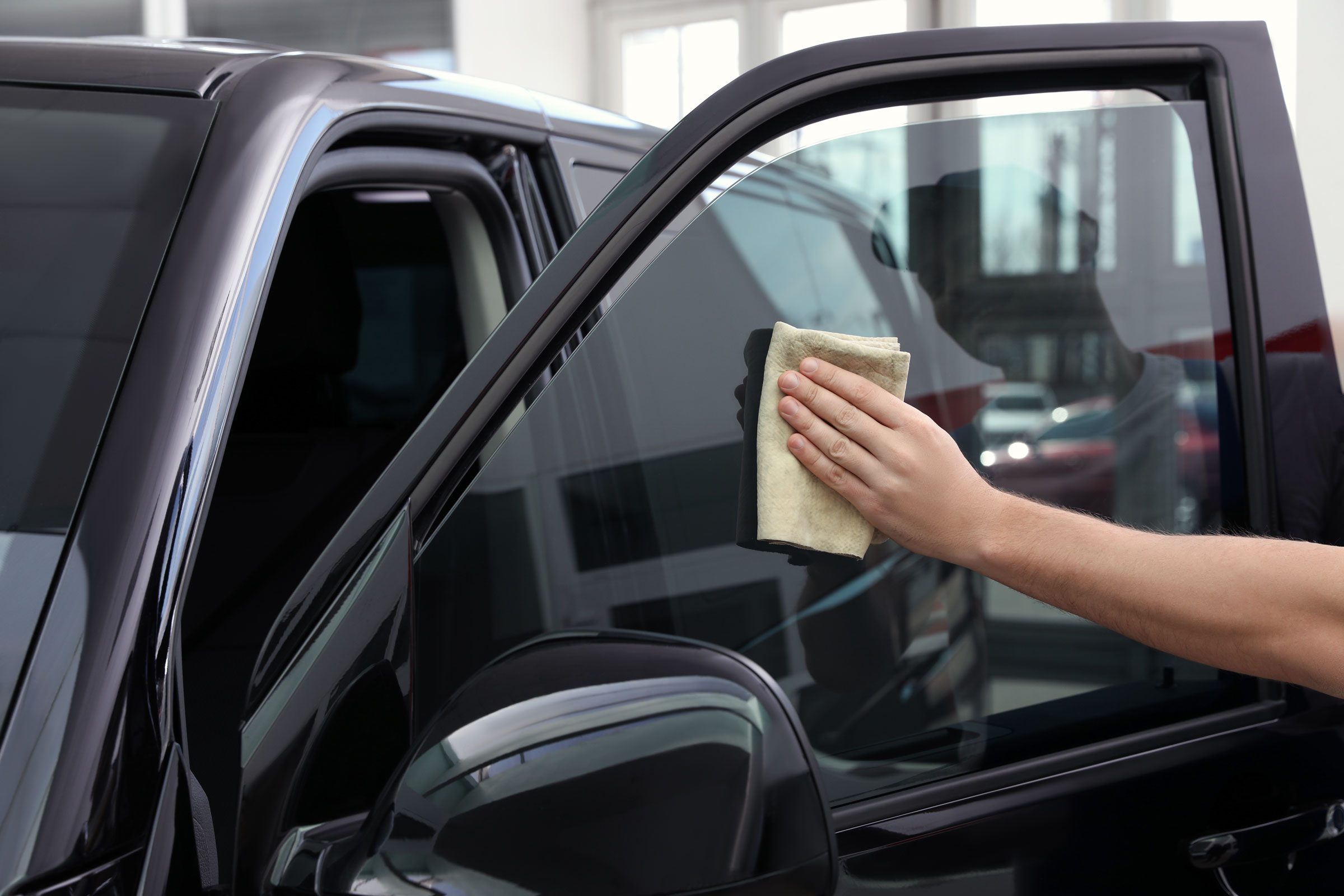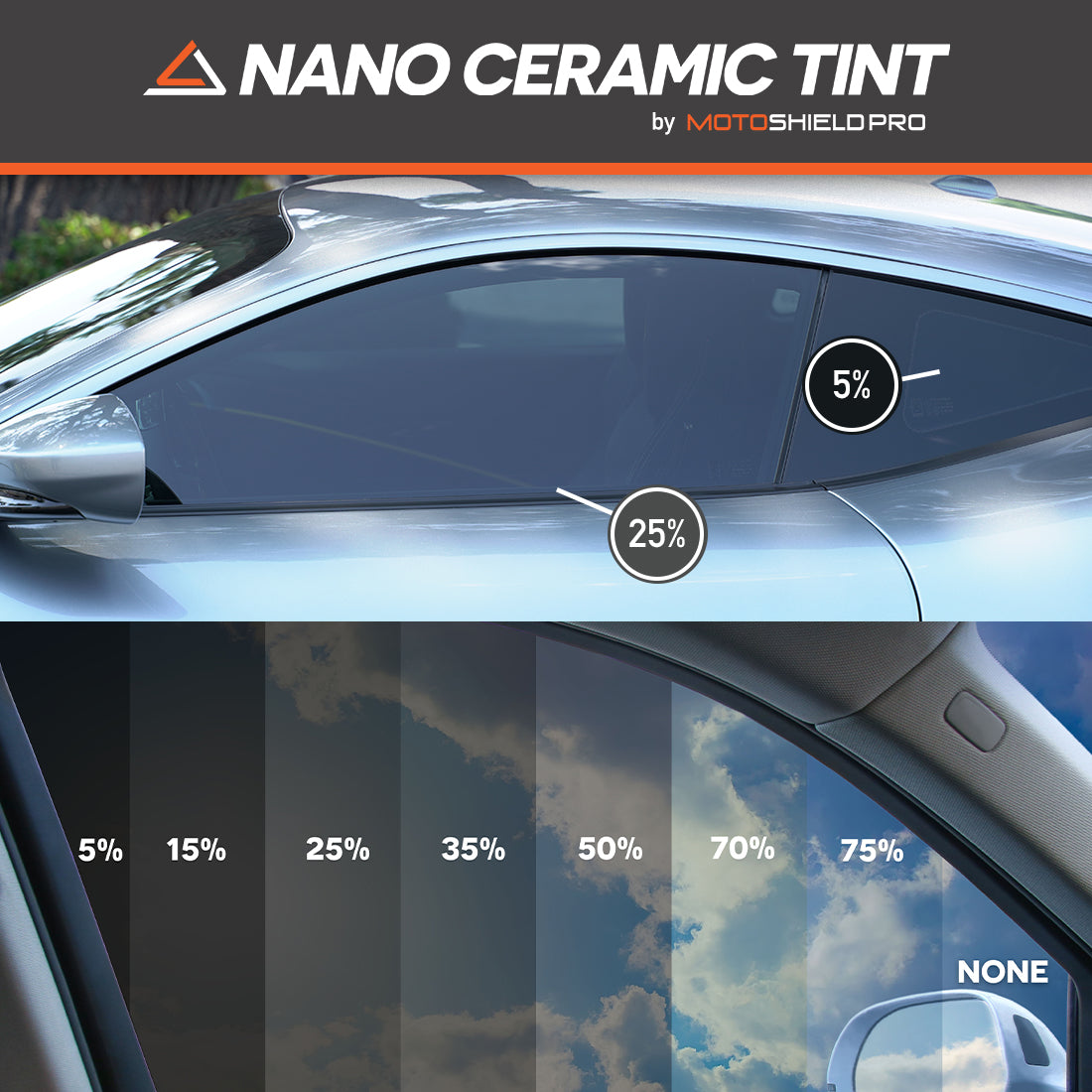Exploring the Legal Limits of Window Tinting for Cars and Homes: What You Should Understand
Window Tinting Options: Locate the Right Shade for Your Design and Demands
Selecting the suitable window tint for your car includes a cautious factor to consider of numerous elements, consisting of individual aesthetic appeals, practical demands, and lawful constraints. With alternatives varying from light tintss that use marginal personal privacy to darker tones that boost privacy, the selections can be frustrating. window tinting. Recognizing the effects of visible light transmission (VLT) percentages and the benefits of different materials is vital in making an informed option. As you ponder your options, you may wonder just how these components interaction to develop not simply an appearance, but a tailored experience when traveling.
Recognizing Window Tinting Degrees
When thinking about window tinting, it is important to recognize the various degrees of tint readily available, as they substantially affect both appearances and performance. Window tinting is categorized based upon Visible Light Transmission (VLT) percents, which suggest the quantity of light enabled to pass via the glass. The VLT portion can vary from extremely light (over 70%) to really dark (listed below 5%)
The key levels of tint include clear, which provides UV protection without changing visibility; light tint (over 50% VLT), which somewhat lowers glare while preserving presence; medium tint (around 35% VLT), striking a balance in between personal privacy and light transmission; and dark tint (below 20% VLT), supplying significant privacy and warm decrease but limiting external presence.
Understanding these degrees is crucial as they can affect driving safety and security, lawful compliance, and personal comfort. Furthermore, neighborhood laws frequently determine permitted tint degrees, varying by state or municipality. Prior to choosing a color, it is suggested to study and make certain adherence to these laws while considering individual choices for design and useful advantages.
Popular Tint Tone Explained

One of one of the most preferred options is the timeless dark tint, commonly ranging from 20% to 5% VLT (Noticeable Light Transmission) This shade uses optimum privacy and a streamlined, advanced appearance. It effectively obstructs UV rays and heat, making it excellent for warm environments, though it may restrict visibility during the night.
Conversely, lighter tones such as 35% or 50% VLT provide a much more refined appearance while still supplying some degree of personal privacy. These shades are best for those seeking an equilibrium between visual appeals and capability, as they enable for far better exposure and adhere to various legal requirements.
An additional emerging choice is the ceramic tint, which can can be found in a variety of shades - window tinting. It uses remarkable warmth rejection and UV security without dramatically altering the automobile's appearance

Legal Rules for Window Tinting
Recognizing the lawful regulations bordering window tinting is crucial for vehicle proprietors seeking to customize their autos. Each state in the united state has specific legislations governing the darkness or lightness of window tintss, commonly measured by Visible Light Transmission (VLT) percent. VLT refers to the quantity of light that can travel through the movie and the glass integrated.
In numerous states, laws dictate various VLT percents for numerous windowss, including front windshields, side windowss, and back windowss. For example, some states may permit a tint of 70% VLT for windscreens while allowing darker tintss for back windowss. Furthermore, particular states have restrictions on reflective tintss, which can produce glare for various other vehicle drivers.
Failure to follow these policies can cause penalties, mandated elimination of the tint, and increased insurance coverage premiums. Automobile proprietors need to consult local laws or state DMV web sites to guarantee they are within lawful limitations prior to waging installment. Recognizing these regulations not just aids avoid legal repercussions but also guarantees a safe driving experience.
Benefits of Different Tint Materials
Discovering the advantages of numerous tint products discloses substantial benefits that can boost both the capability and visual charm of an automobile. Each material provides distinct characteristics suited to details demands and choices.
Dyeded window films are preferred for their cost and capability to decrease glare. They effectively obstruct UV rays, shielding the interior from fading, though they may not provide the highest possible warm rejection. Metalized films, on the various other hand, offer superior warmth decrease and UV security due to their reflective residential properties. They can boost privacy and safety and security but might interfere with electronic signals.
Ceramic window films represent a this post costs alternative, supplying extraordinary heat denial while preserving visibility. They are non-metallic, hence preventing any signal disturbance, and are extremely durable, standing up to scrapes and fading over time. Additionally, ceramic films do not contain dyes, making certain a longer-lasting appearance.
Last but not least, hybrid films integrate elements from dyeded and metalized options, supplying a balanced performance in regards to warmth being rejected, glow reduction, and expense. Each tint material offers unique functions, allowing car proprietors to choose the best suitable for their lifestyle and aesthetic preferences, inevitably improving their driving experience.
Picking the Right Tint for You
Finding the right window tint entails considering different variables, consisting of personal preferences, car type, and try this out regional laws. Examine your individual design and wanted degree of privacy, as these will direct your option of tint shade. Darker tintss offer improved privacy however may not appropriate for all motorists, specifically those that favor an even more open feeling inside their lorry.
Following, consider your car type, as the shapes and size of windowss can influence the performance of specific tintss. As an example, larger windowss might gain from reflective tintss that minimize glow while smaller windowss may be much more suited to dyeded films that use subtle aesthetics.
In addition, it's vital to inspect local laws relating to window tinting. Lots of states impose constraints on the permitted darkness and reflectivity, particularly for front windowss. Compliance with these legislations is important to make certain and prevent penalties security.
Lastly, examine the tint product that best fits your needs. Choices consist of dyeded, metalized, ceramic, and crossbreed films, each offering one-of-a-kind benefits associating with warm denial, UV security, and resilience. By taking into consideration these factors, you can with confidence select a home window tint that lines up with your design and functional demands.
Conclusion
To conclude, picking the appropriate window tint calls for careful consideration of different factors, consisting of VLT percentages, regional laws, and the desired aesthetic. Different tint products supply distinct benefits that can improve lorry comfort and security. By completely recognizing the available options and aligning them with private choices and sensible demands, one can accomplish an optimum equilibrium in between design and capability in window tinting selections.
Picking the appropriate window important site tint for your vehicle involves a careful consideration of various elements, including personal looks, useful needs, and lawful constraints. Each state in the United state has certain legislations regulating the darkness or agility of window tintss, frequently measured by Visible Light Transmission (VLT) percentage. Some states may allow a tint of 70% VLT for windshields while allowing darker tintss for back windowss.Discovering the right window tint involves taking into consideration numerous variables, including individual choices, lorry kind, and neighborhood regulations.In conclusion, selecting the appropriate window tint requires careful factor to consider of different elements, including VLT percentages, local laws, and the preferred aesthetic.